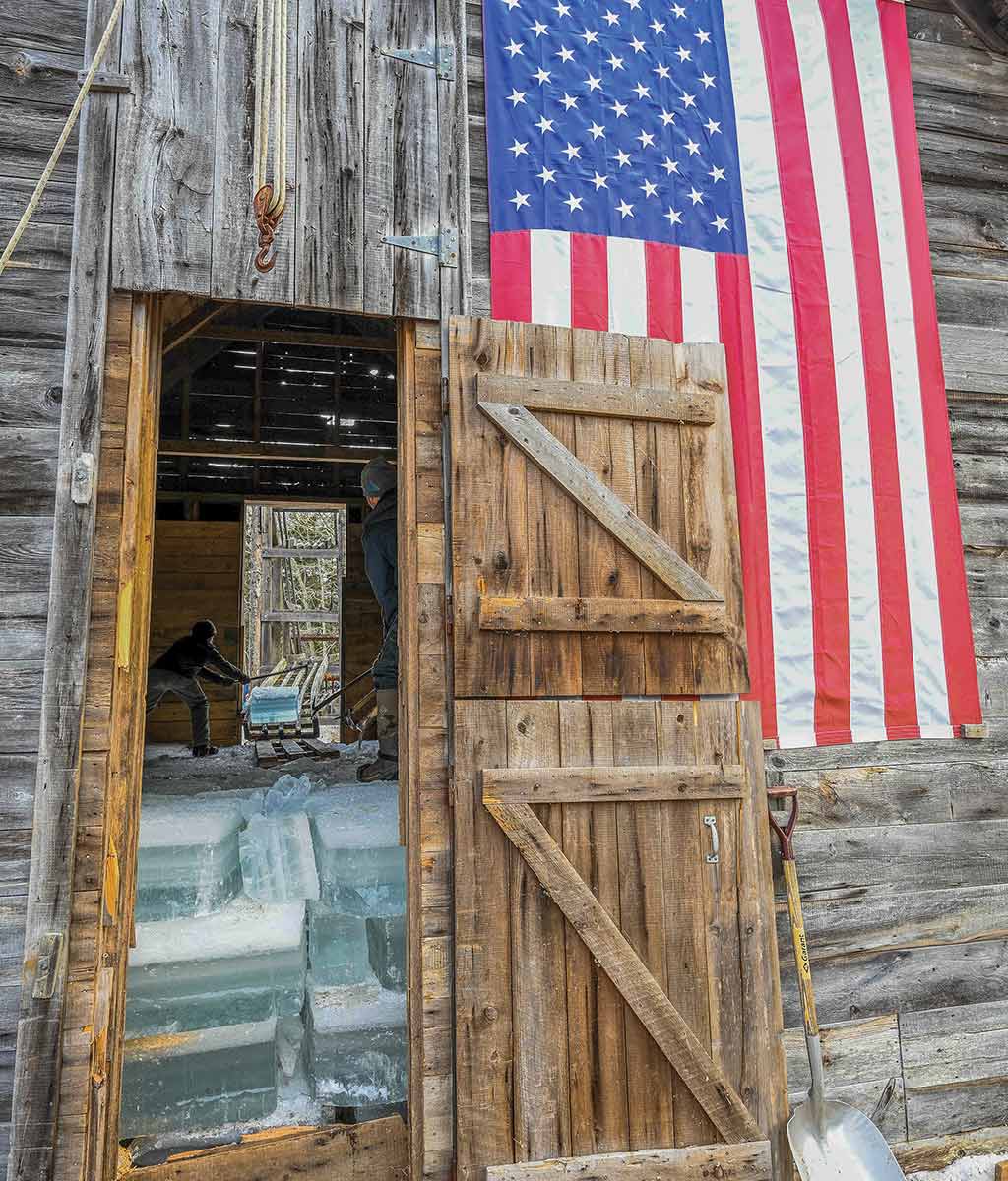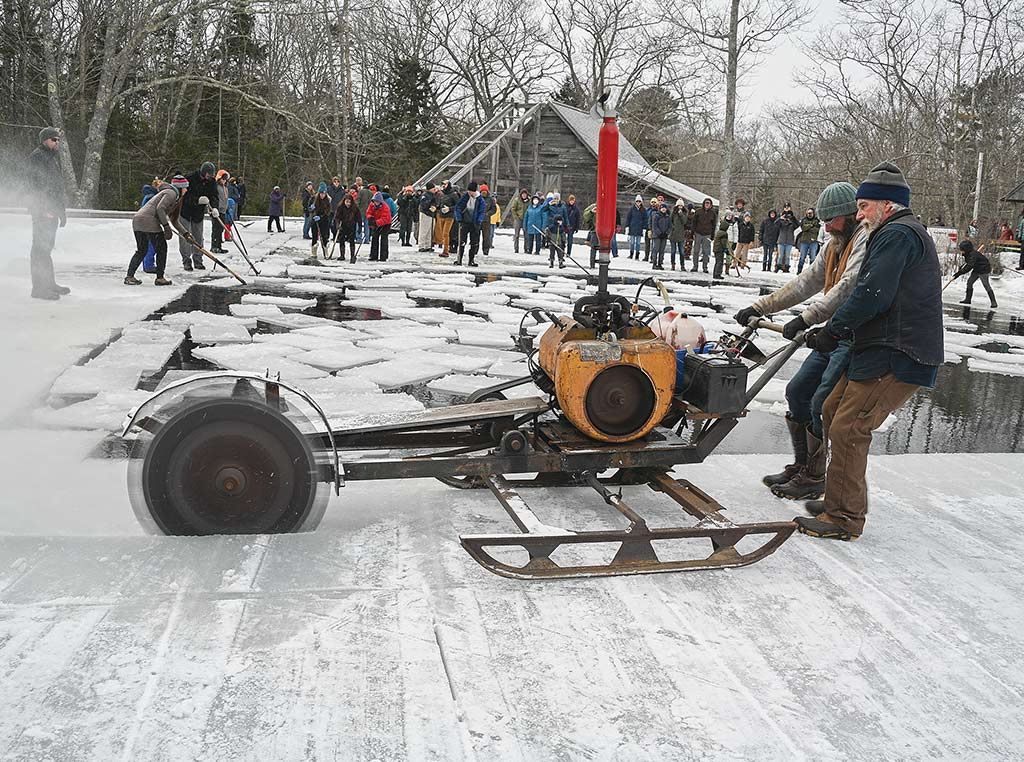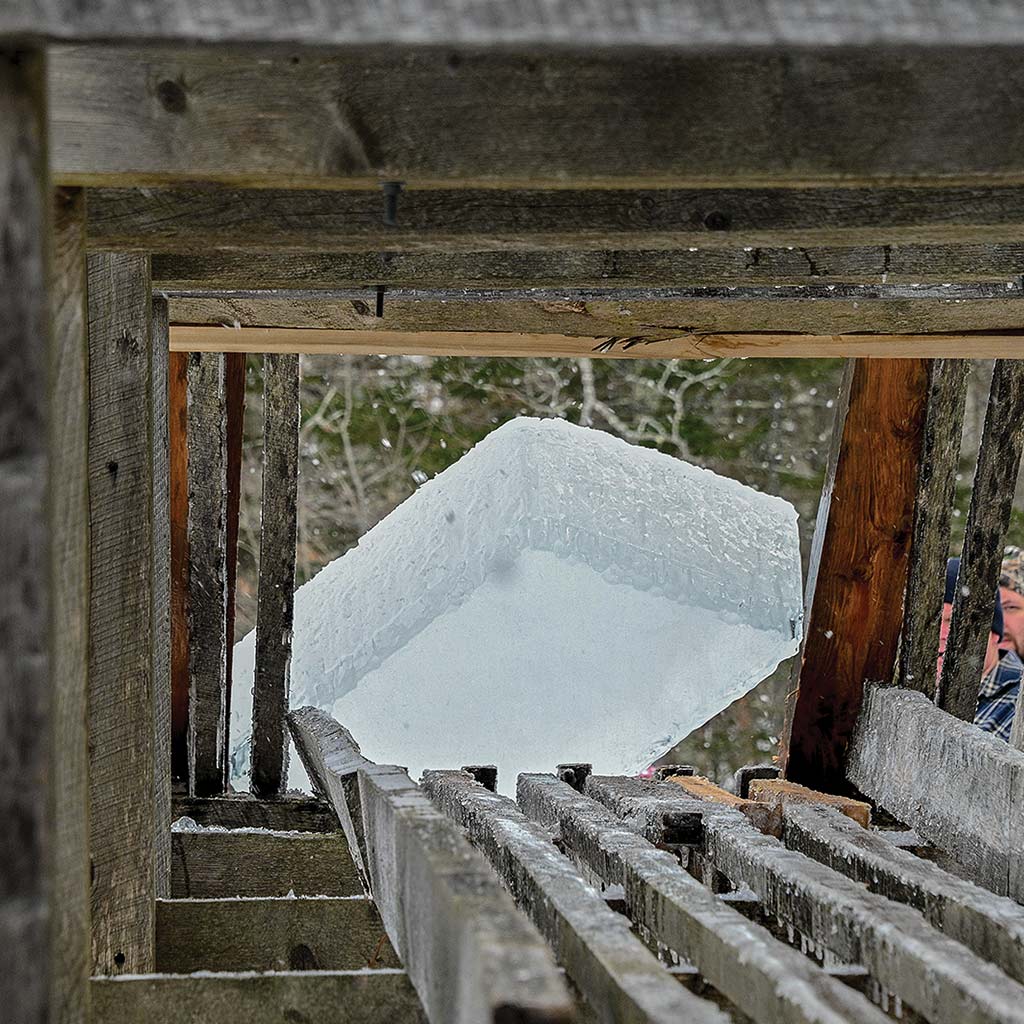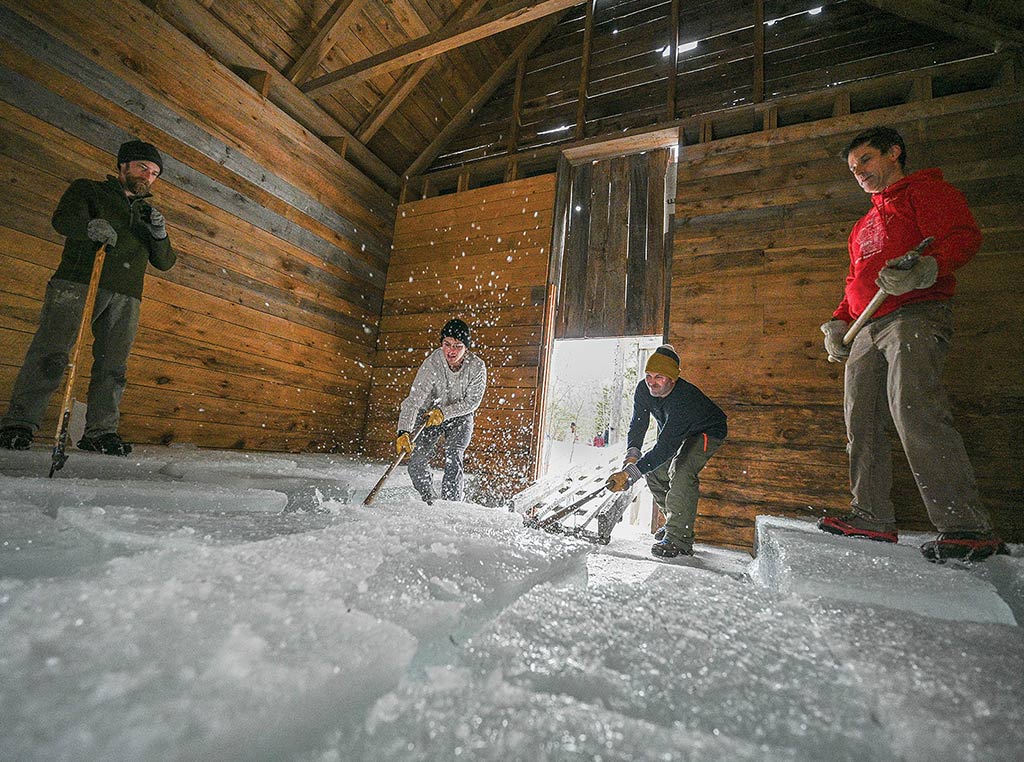Rural Living, Specialty/Niche December 01, 2022
A Chilly Harvest
.
The tradition of ice harvest.
A pike shoves the back end of a white-capped ice block back down into the black, murky depths of the pond from which it was just cut. Spotting the signal, a truck driver begins to back up, tightening a cable attached to a submerged sled. The sled slowly slides up slanted scaffolding, a lip on its bottom catching the end of the canted ice block.
Water surges ahead of the 2-foot by 3-foot, 11-inch-thick slab as it clears the pond. The sled continues upward until the ice hits a cutout in the scaffolding. The block tips and is sent careening down a 50-foot-long, slat board chute, over a small stream, picking up steam as it skates its way into the ice house.
A clattering rumble announces the block's arrival to the ice house workers before it makes its dramatic high-speed transition from a bright snowy day to the dark confines of the ice house.
Men and women armed with long handled pikes jump to hook a corner of the ice to transfer the dangerous forward momentum into a spin. The twirling block is then shoved into a waiting spot.
"The secret to stacking ice is don't let the block stall. You keep it spinning and moving until it's where you want it. If it stops, it will refreeze in place real quick," says Ken Lincoln, one-time iceman and now president of the Thompson Ice House Harvesting Museum in South Bristol, Maine.
Sound is muffled in the 30X30-foot ice house, due to the 10-inch thick, sawdust-stuffed walls designed to insulate the ice through the summer heat. The silence is regularly broken, however, by the solid smack of high-speed ice collisions. Glistening shards of debris skitter across the already situated layer of ice.
"This is a young man's sport. I'm 37 and hopefully retiring from this position soon," says Kyle Lincoln, Ken's son, huffing out a visible breath after spinning yet another block into place.
His father, Ken, spent his youth on Thompson Pond skating, clearing snow, earning $20 for a day of ice harvest and eventually leasing the pond and harvesting ice commercially himself for two years.
"It was a lot of physical work and wasn't lucrative by the 1980s when I did it," he recalls. Slow modernization kept ice harvest viable longer on their isolated peninsula. "Remote areas of South Bristol didn't get electricity until the early 1960s."
Asa Thompson created the pond fed by natural springs in 1826. He cut ice for his farm, then for others. Eventually he and future generations and contractors harvested the pond to supply ice for area ice boxes, commercial fishermen, refrigerated trucks delivering Maine lobster to Florida, and more. They'd stockpile more than 1,000 tons of ice.
Lincoln was the last to harvest ice commercially. Herb Thompson eventually donated the property to the Thompson Ice House Preservation Corporation to be preserved and operated as a museum.
Above. Ken Lincoln (far right) pulls the power saw across the pre-marked grid cutting a row of ice free. Ice flies as a 250-pound block collides with another. A block tips from the hoist onto the trestle leading to the ice house.
Living history. There isn't much of a market for this type of ice anymore, but every February, hundreds of people descend on Thompson Pond to enjoy a hands-on experience of traditional ice harvest. Around 80 tons of ice are stashed away, about five layers worth in the ice house. That ice is then used to make ice cream at a celebration in July.
Traditional tools, some 200 years old, are used in the process. Lincoln uses a scriber—four narrow shavers mounted on a wooden handle to cut evenly spaced grooves in the ice—to lay out a grid on the ice for the saw to follow. The power saw, also an antique, is used to cut in a channel between the ice field and the hoist. Then, it slots into the grooves created by the scriber to cut several rows of the ice grid.
The ice saw leaves three to four inches of ice still connected beneath the surface. Hand saws are used to cut row ends free and two-pronged breaker bars are used to jab in and break off individual blocks.
While the ice house is reserved for teens and older volunteers and tourists, everyone is welcome on the ice. Grade school kids—some great, great, great Thompson grandkids—leap back and forth over the channel as they help move ice blocks from the field to the hoist. Dunking and flipping a slab to reveal the crystal-clear bottom proves great fun, too. They just have to make sure it's flipped back before it makes the slide into the ice house.
The channel on the shallow end of the pond is also manned by children, many not much over two years old. Their puffy snowsuits make their moves stiff and comical as they use pikes to poke and push ice along the channel while their parents hover watchfully.
Edgar Thompson (67) watches the crowd on the ice and recalls the ice harvests of his youth. "That saw is an upgraded version of the one I remember," he says of when he harvested ice with his father. They didn't harvest every year. Ice is as dependent on weather as any farm crop.
"One year my dad told my grandfather they ought to cut the ice. My grandfather said no, let's wait a bit longer and get a few more inches of ice. Two weeks later there were ducks swimming in the pond," Thompson says.
"This is a good ice year," Kyle says, noting that isn't a guarantee anymore. His 4-year-old niece was among the pint-sized helpers. "Every year is fun and it's such a unique thing to get to be a part of."
"Hopefully Mother Nature treats us fair and we can continue ice harvest for future generations," Ken says.
Read More

RURAL LIVING, SPECIALTY/NICHE
Snowshoe Artist
Retired principal creates snow art one step at a time.

RURAL LIVING, SPECIALTY/NICHE
Dancing for Joy
Gurdeep Pandher and the power of positivity.





